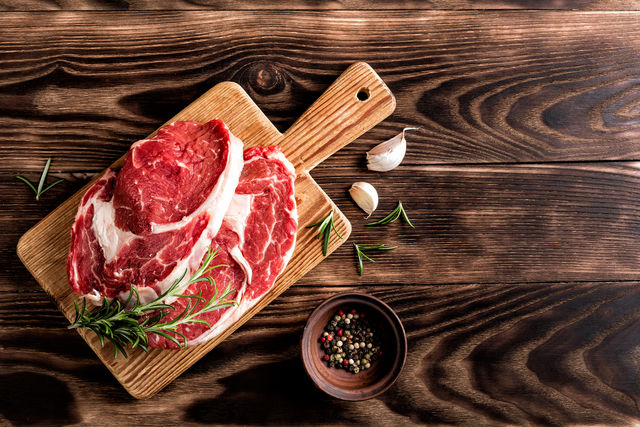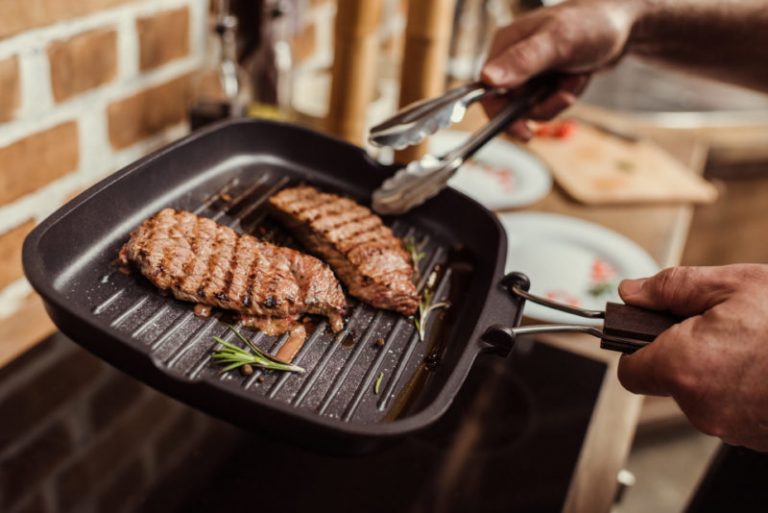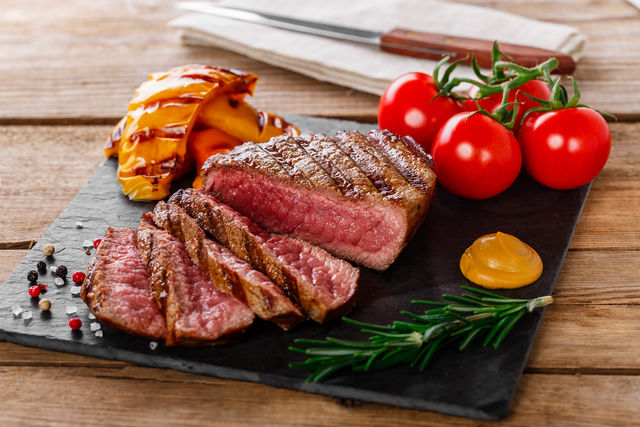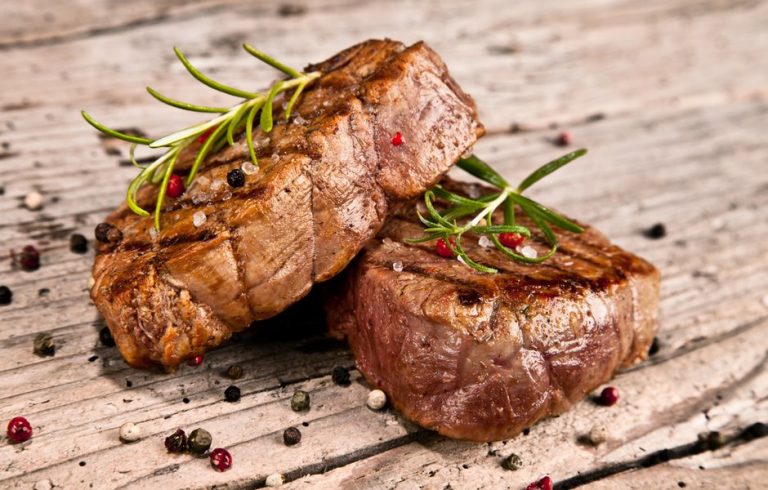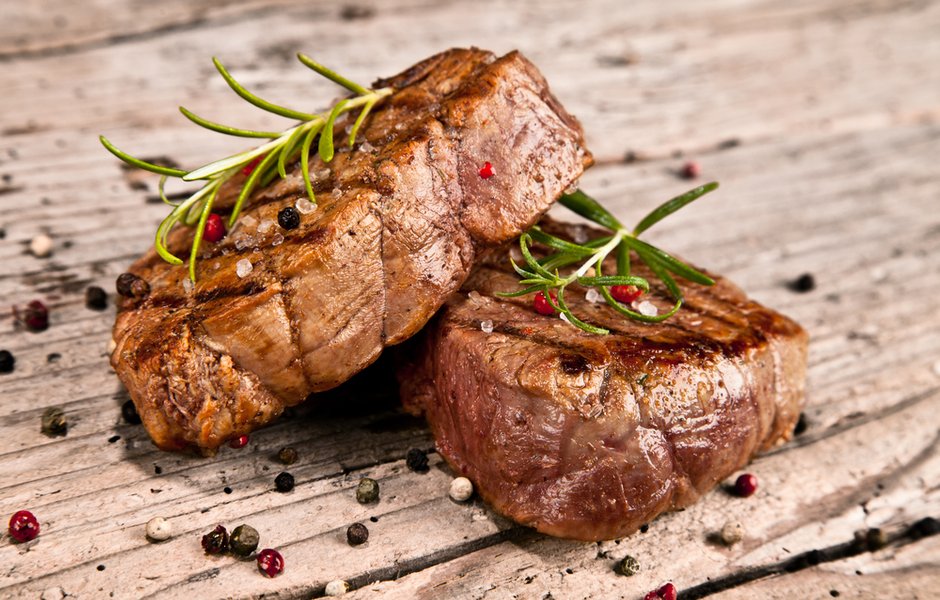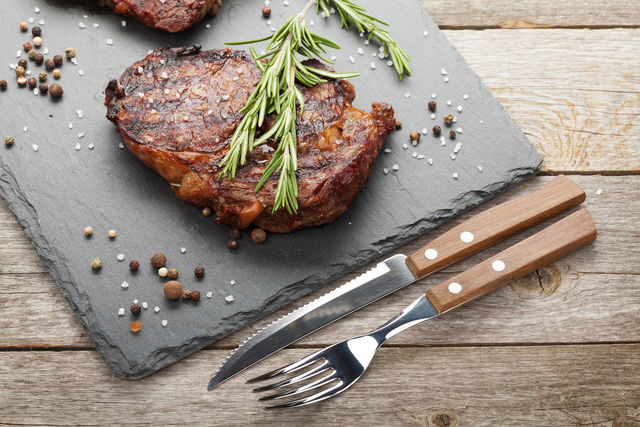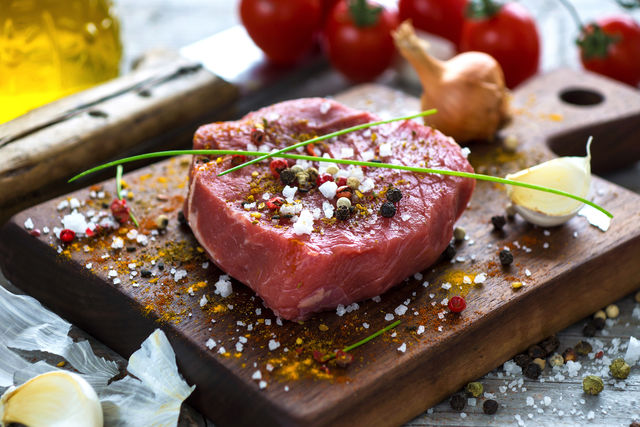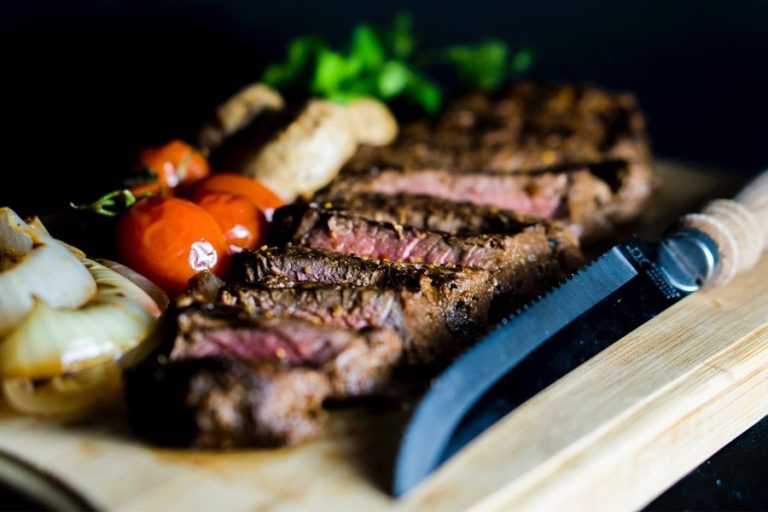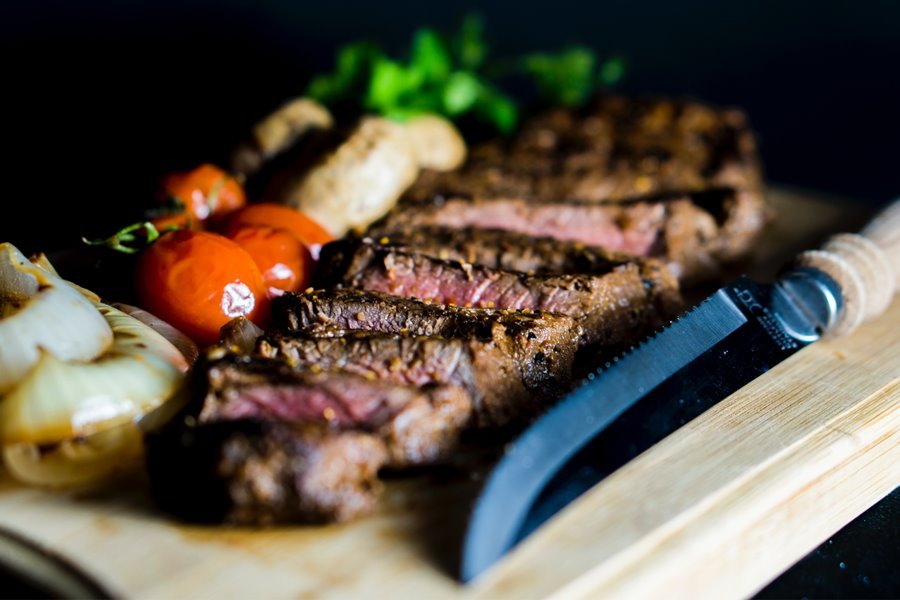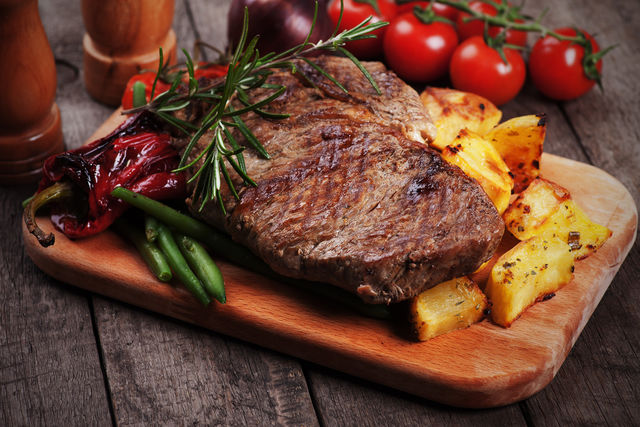What’s better than a sumptuous marbled steak? – Only properly fried marbled steak.
Before we start distributing useful tips, and you start frying delicious beef, let’s remember that a steak is a proportional and beautiful piece of meat suitable for frying, which is at least 2.5 cm thick. permeated with thin veins of fat and creating marbling praised by poets from cooking, makes it possible to cook the juiciest tender and mouth-watering steak in the world.
- What kind of meat to take?
In fact, in addition to premium cuts like Ribeye, which is a thick rim, and Striploin, this, in turn, is a thin rim, as well as fillet Mignon, the carcass of a marble goby is rich in a variety of pieces of excellent meat, suitable for frying in a pan and grilling … The main differences between premium marbled meat and alternative parts of the carcass can be considered the ease of processing and cutting of the steak, the softness of the resulting steak.
That is, by choosing the classic part of the carcass, you are guaranteed to get even, proportional steaks with a luxurious taste and aroma. These are delightfully tender and juicy pieces of marble goby that are perfect in both skillet and grill.
When choosing premium cuts – rump, flank, shoulder fillet, and some other parts, be sure to pay attention to the special instructions of the manufacturer and seller. Since each piece of alternative beef can be used for different types of cooking. You should be interested in the line: for frying, for grilling. If such a line is present, then you can safely purchase delicious marbled meat and cook your favorite steaks. The price of such meat will be lower, and sometimes several times lower than the classic cuts. Don’t let that scare you. This does not make the meat less tasty. In contrast, many alternative steaks have a richer, more “beef” flavor. So, separate the dense fat layers from the meat pulp, cut the meat into steaks across the fibers and you can send them to fry. Wait a minute …
- The degree of roasting or how not to spoil an excellent steak?
At the bottom of the blog, you can check out a photo that shows slices of steaks of various degrees of roast. The degree of roasting you need can be determined visually, as well as knowing how much time you need to create just such a meat. Chefs and true gourmets prefer what is called “meat with blood”, that is, the degree of roasting Rare and Medium Rare. However, let’s take a look at the table.
Recommended cooking levels for steaks:
Blue – the so-called raw roast (no more than 2-3 minutes), the meat inside has a temperature of no higher than 39-40 ° C.
Rare is practically uncooked meat (only 3-4 minutes to cook). However, there are many connoisseurs of just such steaks, fried on the outside and red on the inside. t ° of meat, in this case, is 45-48 ° C
Medium rare is lightly fried meat with juice that has a deep pink color. (It will take 5-6 minutes to cook), meat temperature will be about 48-53 ° C
Medium – medium-rare meat, the most preferred degree of roasting, in which the meat retains the light pink juice inside. (It will take 6-7 minutes to cook), the temperature of the meat will be 53-57 ° C
Medium Well is normally fried meat with clear juice inside (it will take 8-9 minutes to fry), meat temperature is about 57-62 ° C
Well Done is a slice of well-done meat that has a grayish to brown color without red and pink interlayers, practically without clear juice. It will take about 10 minutes or more to cook, and the meat temperature will be 65 ° C or more.
Choose the degree of roast you need, try, experiment, find exactly yours, and ignore popular opinions. If you like perfectly cooked meat, do it that way, if you are a fan of almost raw beef, fry the steak for no more than 3-4 minutes and have fun.
- How to fry the right steak?
- The thickness of a traditional steak, at which you can accurately determine the cooking time and get an excellent result of at least 2.5 cm.
- Taking meat out of the refrigerator, leave it to lie on a plate for 20-25 minutes. The fact is that cold meat behaves differently when heated and you risk spoiling the taste of the dish.
- The pan must be heated as much as possible before frying.
- You can put your favorite vegetable oil on the steak itself, or you can spread it over the pan. When sending meat to the grill, you do not need to grease it. Do not salt or pepper!
- Fry the steak on each side to the degree you need, an average of 3 minutes, then reduce the heat slightly and brown the meat a little more on each side.
- Place the steak on a preheated plate and let it rest for a short time. The warmth of the plate and a few minutes of rest will keep the meat warm and fully reveal its luxurious taste and juiciness.
- Season with salt and pepper.
Your steak is ready! Enjoy your meal!
